Experimental Measurement and Numerical Simulation on the Snow-Cover Process of Solar Photovoltaic Modules and Its Impact on Photoelectric Conversion Efficiency
Abstract
:1. Introduction
2. Numerical Simulation and Result Analysis
3. Experiment and Results Analysis
3.1. Effects of Snow-Cover Thickness on the Photoelectric Conversion Efficiency
3.2. Test of the Influence of Snow Slip Distance on Photovoltaic Power Generation Efficiency
4. Discussion
5. Conclusions
Author Contributions
Funding
Institutional Review Board Statement
Informed Consent Statement
Data Availability Statement
Conflicts of Interest
References
- Kannan, N.; Vakeesan, D. Solar energy for future world: A review. Renew. Sustain. Energy Rev. 2016, 62, 1092–1105. [Google Scholar] [CrossRef]
- Mehrtash, M.; Quesada, G.; Dutil, Y.; Rousse, D. Performance evaluation of sun tracking photovoltaic systems in Canada. In Proceedings of the 20th Annual International Confernece on Mechanical Engineering–ISME, Shiraz, Iran, 16–18 May 2012. [Google Scholar]
- Kakoi, Y.; Tsutsui, Y.; Ono, N.; Umezawa, K.; Kondo, N. SAE Technical Paper. Emission Reduction Technologies Applied to High-Speed Direct Injection Diesel Engine; SAE International: Warrendale, PA, USA, 1998. [Google Scholar]
- Park, W.; Choi, S.; Chung, S.; Ha, J. A study on exhaust characteristics in HIDI diesel engine applied EGR cooler. In Proceedings of the KSAE 2003 Fall Conference, Seoul, Republic of Korea, 1 May 2003; pp. 393–397. [Google Scholar]
- Jayakumar, P. Resource Assessment Handbook; Asia and Pacific Center for Transfer of Technology of the United Nations, ESCAP: Bangkok, Thailand, 2009. [Google Scholar]
- International Renewable Energy Agency. Installed Capacity Trends [EB/OL]. 2022. Available online: https://www.irena.org/solar (accessed on 1 April 2022).
- Paudyal, B.R.; Shakya, S.R. Dust accumulation effects on efficiency of solar PV modules for off grid purpose: A case study of Kathmandu. Sol. Energy 2016, 135, 103–110. [Google Scholar] [CrossRef]
- Stridh, B. Evaluation of economical benefit of cleaning of soiling and snow in PV plants at three European locations. In Proceedings of the 2012 38th IEEE Photovoltaic Specialists Conference, Austin, TX, USA, 3–8 June 2012; pp. 001448–001451. [Google Scholar]
- Hashemi, B.; Cretu, A.M.; Taheri, S. Snow loss prediction for photovoltaic farms using computational intelligence techniques. IEEE J. Photovolt. 2020, 10, 1044–1052. [Google Scholar] [CrossRef]
- Jelle, B.P. The challenge of removing snow downfall on photovoltaic solar cell roofs in order to maximize solar energy efficiency—Research opportunities for the future. Energy Build. 2013, 67, 334–351. [Google Scholar] [CrossRef]
- Marion, B.; Schaefer, R.; Caine, H.; Sanchez, G. Measured and modeled photovoltaic system energy losses from snow for Colorado and Wisconsin locations. Sol. Energy 2013, 97, 112–121. [Google Scholar] [CrossRef]
- Powers, L.; Newmiller, J.; Townsend, T. Measuring and modeling the effect of snow on photovoltaic system performance. In Proceedings of the 2010 35th IEEE Photovoltaic Specialists Conference, Honolulu, HI, USA, 20–25 June 2010; pp. 000973–000978. [Google Scholar]
- Sugiura, T.; Yamada, T.; Nakamura, H.; Umeya, M.; Sakuta, K.; Kurokawa, K. Measurements, analyses and evaluation of residential PV systems by Japanese monitoring program. Sol. Energy Mater. Sol. Cells 2003, 75, 767–779. [Google Scholar] [CrossRef]
- Heidari, N.; Gwamuri, J.; Townsend, T.; Pearce, J.M. Impact of snow and ground interference on photovoltaic electric system performance. IEEE J. Photovolt. 2015, 5, 1680–1685. [Google Scholar] [CrossRef]
- Wang, Y.; Yao, X.; Chen, J.; He, Z.; Liu, J.; Li, Q.; Wang, J.; Jiang, L. Organogel as durable anti-icing coatings. Sci. China Mater. 2015, 58, 559–565. [Google Scholar] [CrossRef]
- Beemer, D.L.; Wang, W.; Kota, A.K. Durable gels with ultra-low adhesion to ice. J. Mater. Chem. A 2016, 4, 18253–18258. [Google Scholar] [CrossRef]
- Rahmatmand, A.; Harrison, S.J.; Oosthuizen, P.H. An experimental investigation of snow removal from photovoltaic solar panels by electrical heating. Sol. Energy 2018, 171, 811–826. [Google Scholar] [CrossRef]
- Yan, C.; Qu, M.; Chen, Y.; Feng, M. Snow removal method for self-heating of photovoltaic panels and its feasibility study. Sol. Energy 2020, 206, 374–380. [Google Scholar] [CrossRef]
- Anadol, M.A. Snow melting on photovoltaic module surface heated with transparent resistive wires embedded in polyvinyl butyral interlayer. Sol. Energy 2020, 212, 101–112. [Google Scholar] [CrossRef]
- Aldawoud, A.; Aldawoud, A.; Aryanfar, Y.; Assad, M.E.H.; Sharma, S.; Alayi, R. Reducing PV soiling and condensation using hydrophobic coating with brush and controllable curtains. Int. J. Low-Carbon Technol. 2022, 17, 919–930. [Google Scholar] [CrossRef]
- Fries, L.; Antonyuk, S.; Heinrich, S.; Palzer, S. DEM–CFD modeling of a fluidized bed spray granulator. Chem. Eng. Sci. 2011, 66, 2340–2355. [Google Scholar] [CrossRef]
- Lu, H.; Zhang, L.Z. Influences of dust deposition on ground-mounted solar photovoltaic arrays: A CFD simulation study. Renew. Energy 2019, 135, 21–31. [Google Scholar] [CrossRef]
- Pruitt, W.O. Why and How to Study a Snowcover. Can. Field Nat. 2005, 119, 118–128. [Google Scholar] [CrossRef]

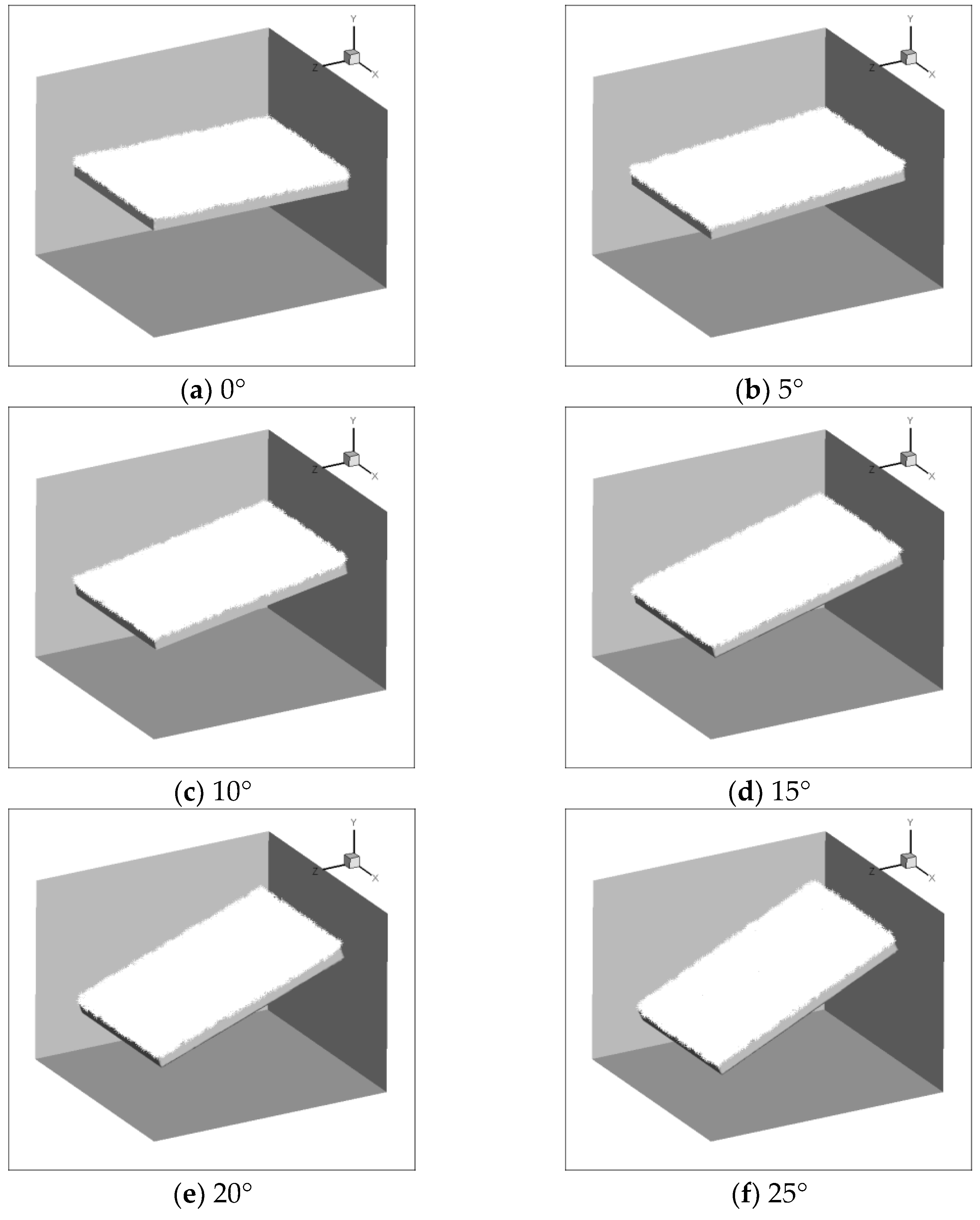

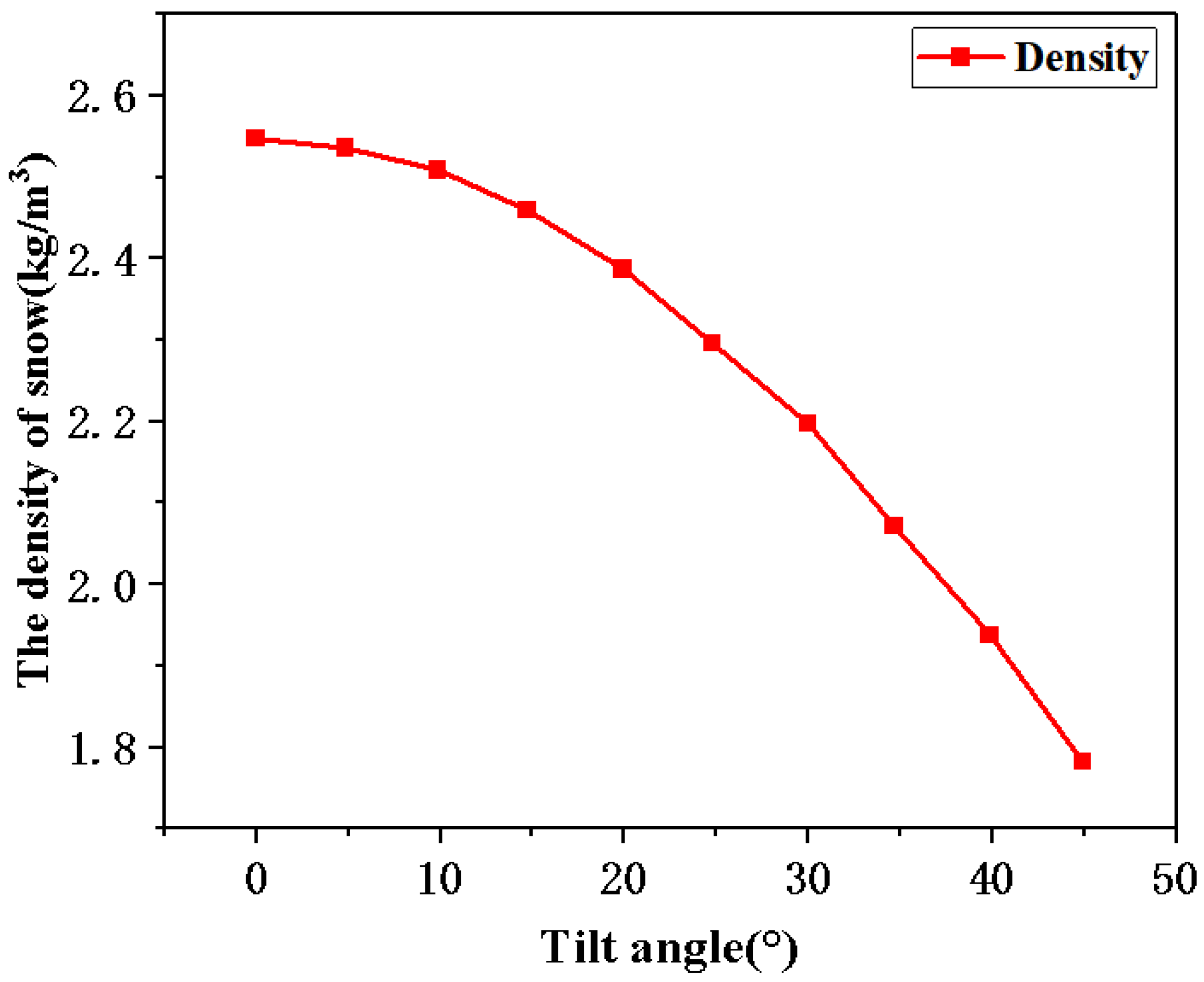
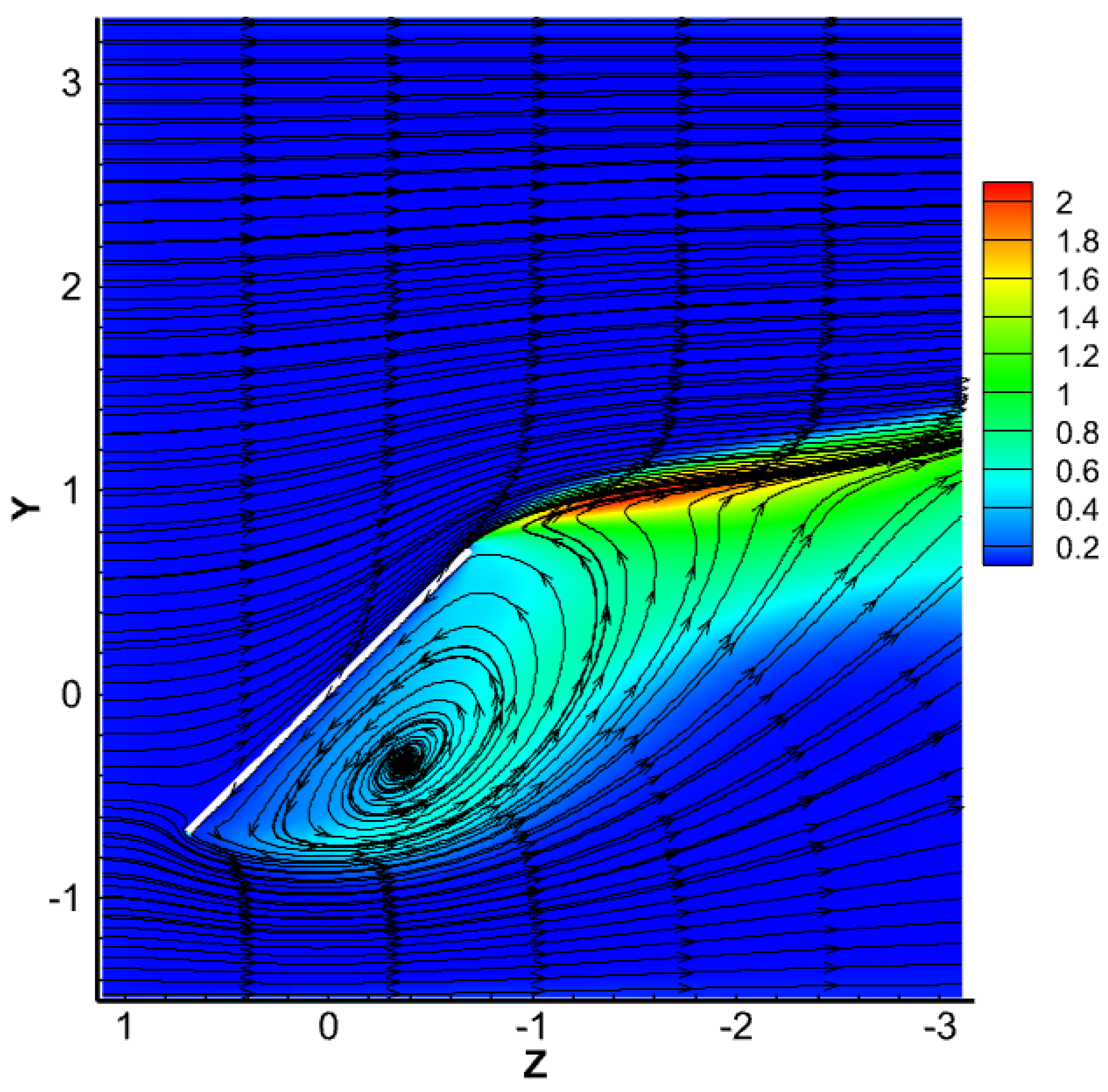
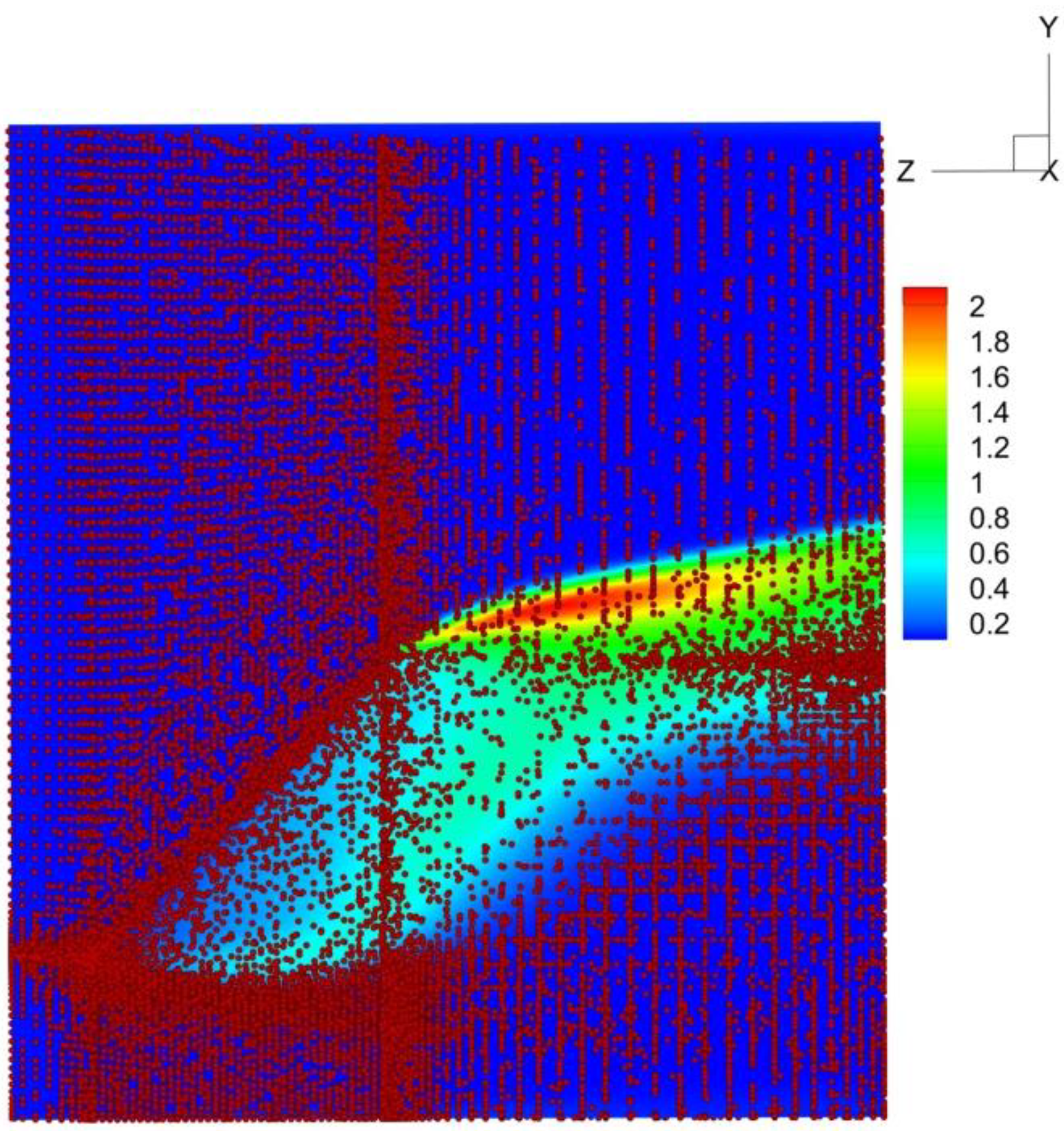
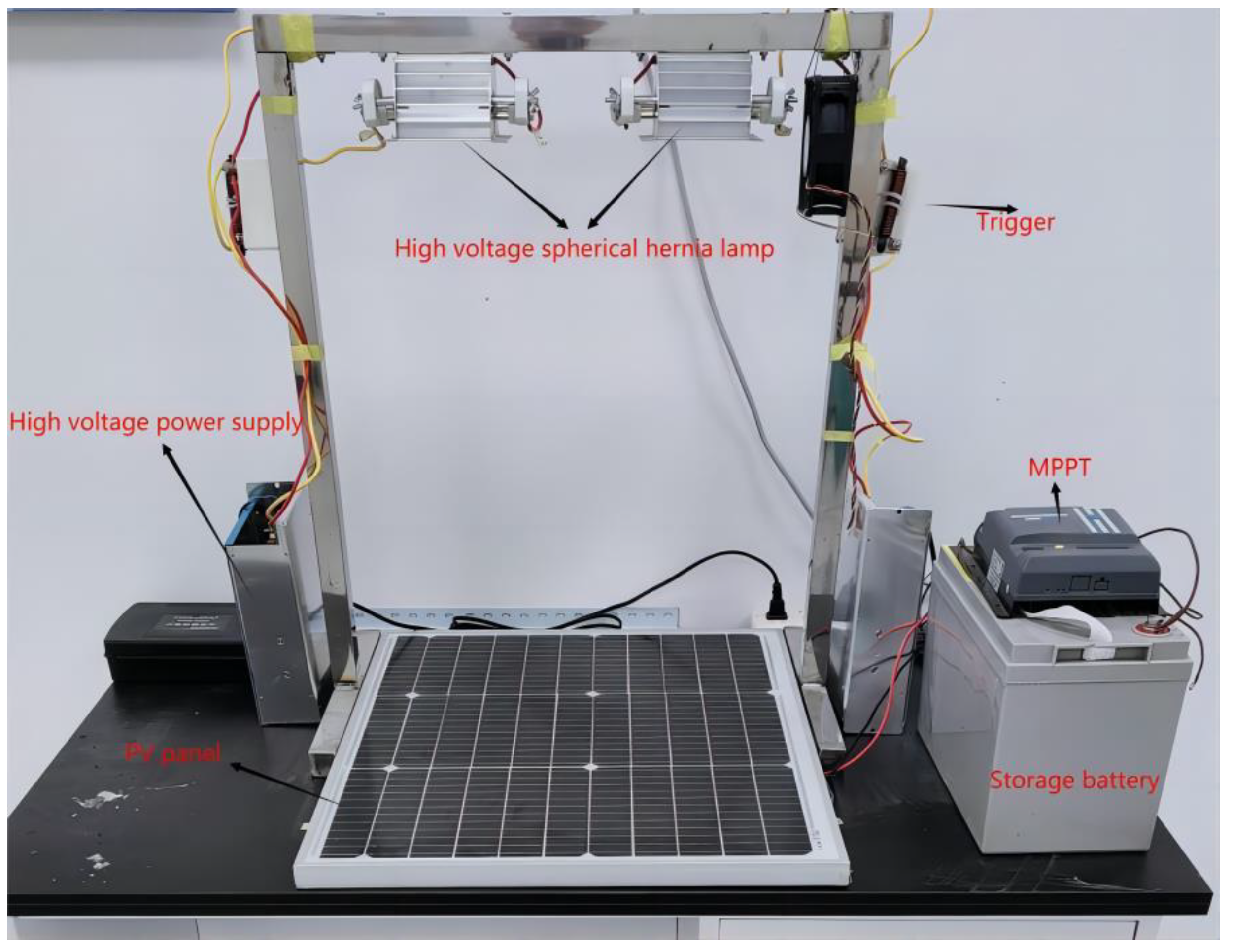




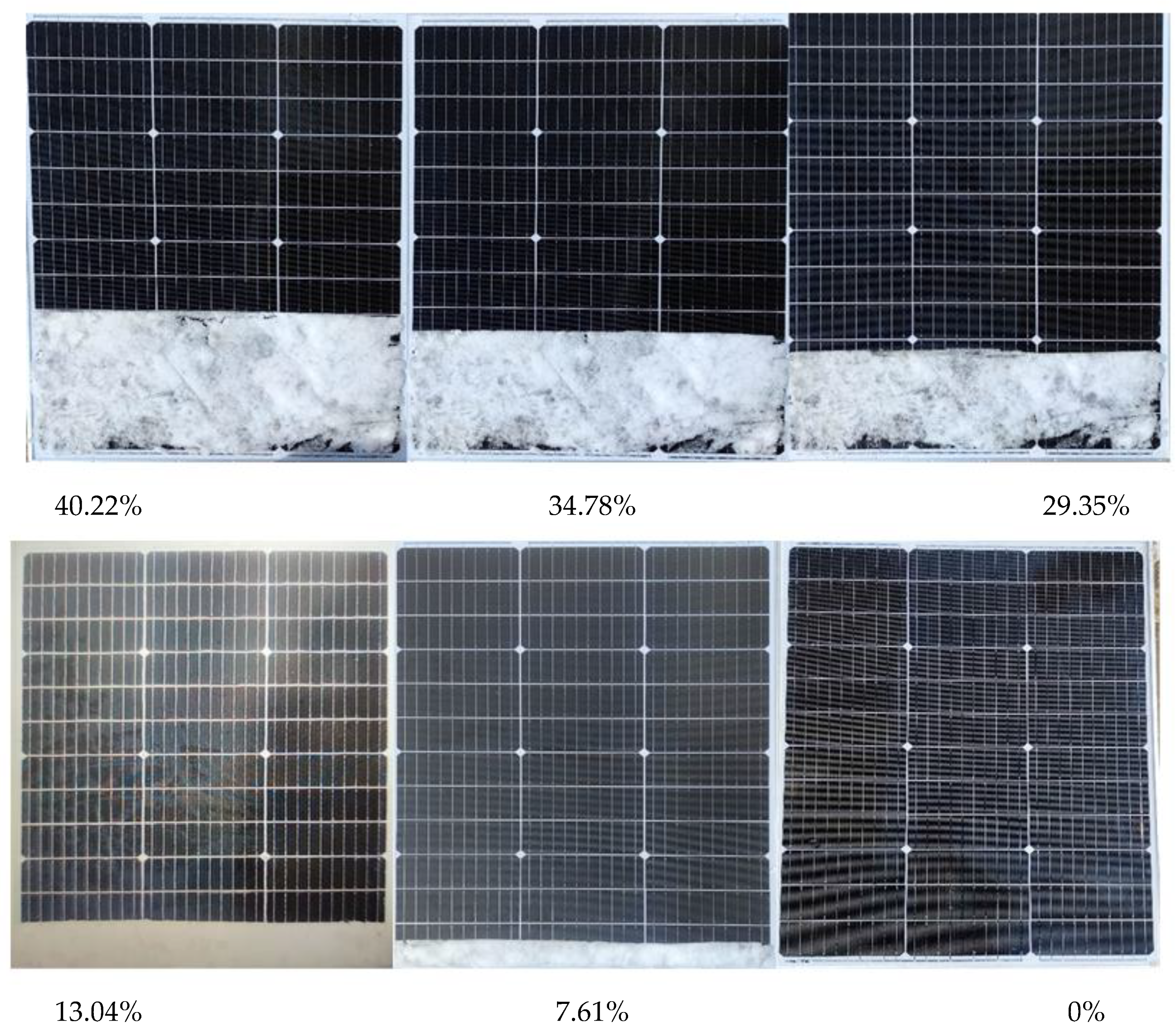
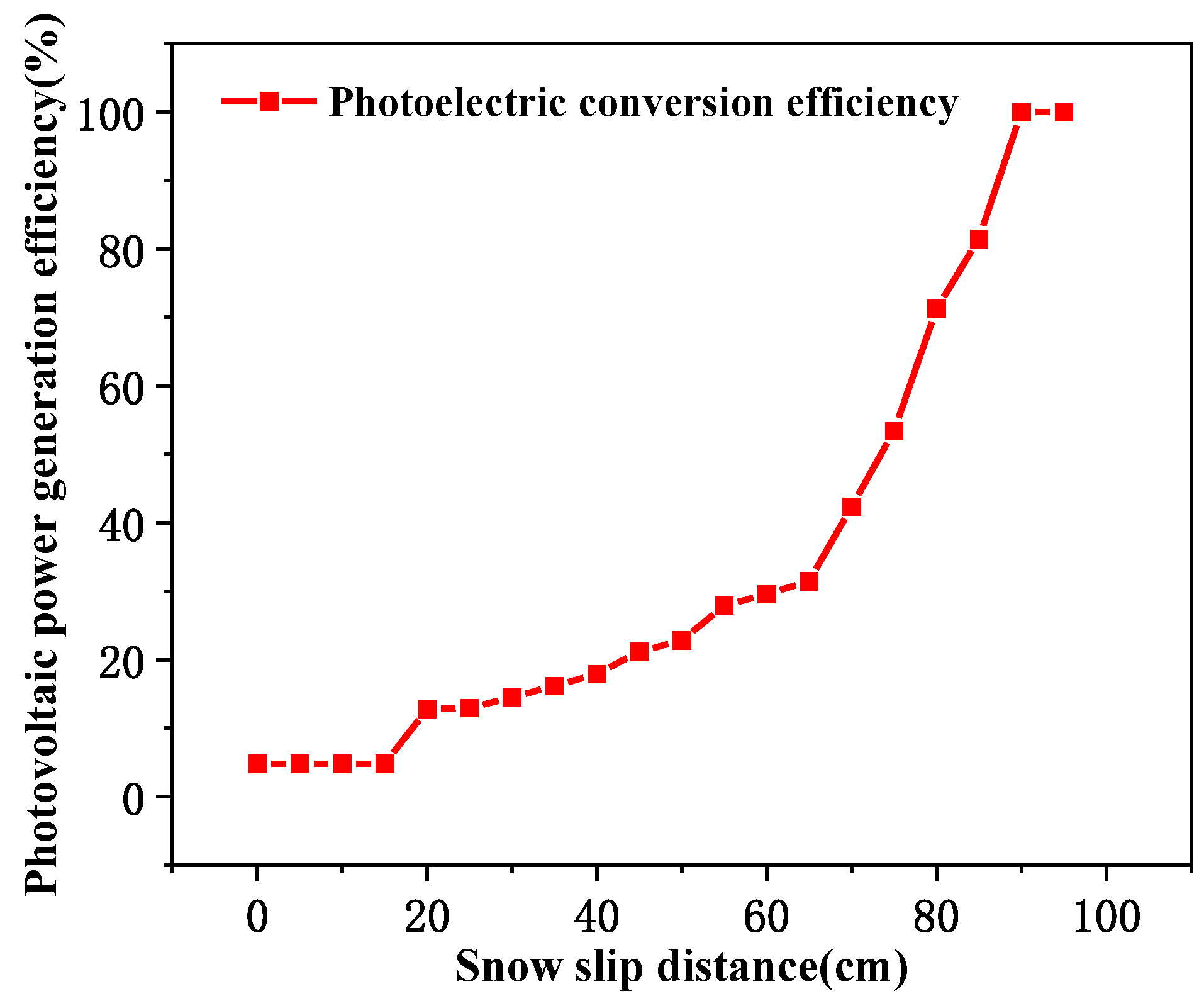
Disclaimer/Publisher’s Note: The statements, opinions and data contained in all publications are solely those of the individual author(s) and contributor(s) and not of MDPI and/or the editor(s). MDPI and/or the editor(s) disclaim responsibility for any injury to people or property resulting from any ideas, methods, instructions or products referred to in the content. |
© 2023 by the authors. Licensee MDPI, Basel, Switzerland. This article is an open access article distributed under the terms and conditions of the Creative Commons Attribution (CC BY) license (https://creativecommons.org/licenses/by/4.0/).
Share and Cite
Quan, Z.; Lu, H.; Zheng, C.; Zhao, W.; Xu, Y.; Qin, J.; An, F. Experimental Measurement and Numerical Simulation on the Snow-Cover Process of Solar Photovoltaic Modules and Its Impact on Photoelectric Conversion Efficiency. Coatings 2023, 13, 427. https://doi.org/10.3390/coatings13020427
Quan Z, Lu H, Zheng C, Zhao W, Xu Y, Qin J, An F. Experimental Measurement and Numerical Simulation on the Snow-Cover Process of Solar Photovoltaic Modules and Its Impact on Photoelectric Conversion Efficiency. Coatings. 2023; 13(2):427. https://doi.org/10.3390/coatings13020427
Chicago/Turabian StyleQuan, Zijia, Hao Lu, Chuanxiao Zheng, Wenjun Zhao, Yongzhong Xu, Jing Qin, and Feng An. 2023. "Experimental Measurement and Numerical Simulation on the Snow-Cover Process of Solar Photovoltaic Modules and Its Impact on Photoelectric Conversion Efficiency" Coatings 13, no. 2: 427. https://doi.org/10.3390/coatings13020427
APA StyleQuan, Z., Lu, H., Zheng, C., Zhao, W., Xu, Y., Qin, J., & An, F. (2023). Experimental Measurement and Numerical Simulation on the Snow-Cover Process of Solar Photovoltaic Modules and Its Impact on Photoelectric Conversion Efficiency. Coatings, 13(2), 427. https://doi.org/10.3390/coatings13020427





